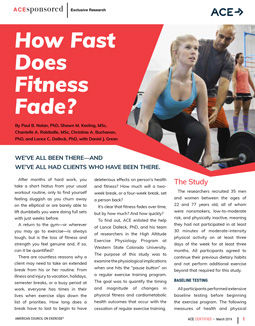ACE-SPONSORED RESEARCH: How Fast Does Fitness Fade?
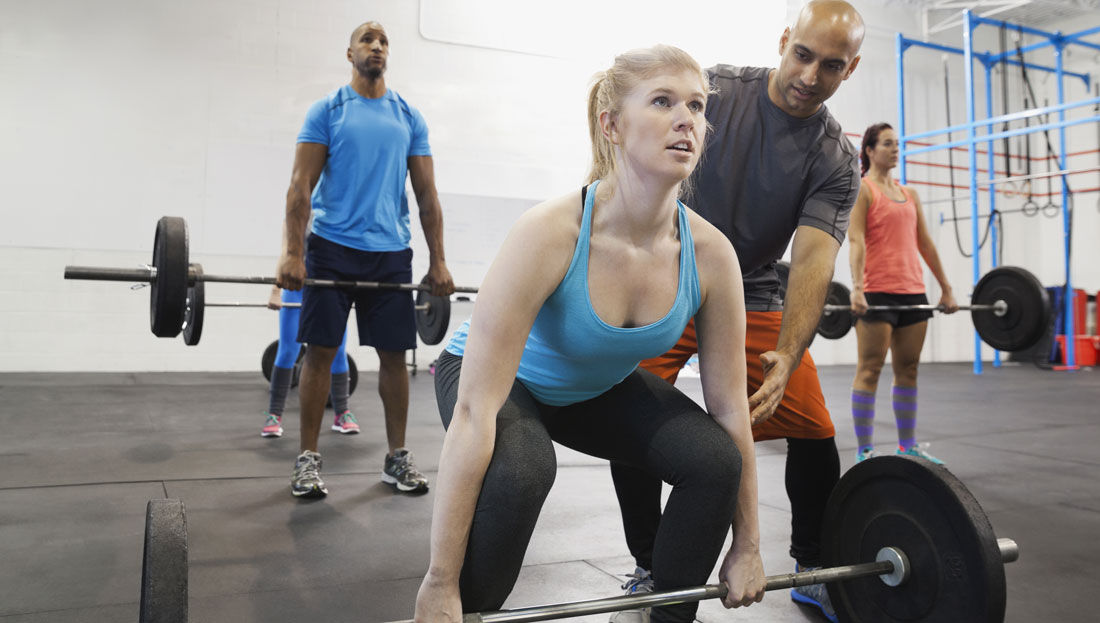
By Paul B. Nolan, PhD, Shawn M. Keeling, MSc, Chantelle A. Robitaille, MSc, Christina A. Buchanan, PhD, and Lance C. Dalleck, PhD, with Daniel J. Green
We’ve all been there—and we’ve all had clients who have been there. After months of hard work, you take a short hiatus from your usual workout routine, only to find yourself feeling sluggish as you churn away on the elliptical or are barely able to lift dumbbells you were doing full sets with just weeks before.
A return to the gym—or wherever you may go to exercise—is always tough, but is the loss of fitness and strength you feel genuine and, if so, can it be quantified?
There are countless reasons why a client may need to take an extended break from his or her routine. From illness and injury to vacation, holidays, semester breaks or a busy period at work, everyone has times in their lives when exercise slips down the list of priorities. How long does a break have to last to begin to have deleterious effects on person’s health and fitness? How much will a two-week break, or a four-week break, set a person back?
It’s clear that fitness fades over time, but by how much? And how quickly?
To find out, ACE enlisted the help of Lance Dalleck, PhD, and his team of researchers in the High Altitude Exercise Physiology Program at Western State Colorado University. The purpose of this study was to examine the physiological implications when one hits the “pause button” on a regular exercise training program. The goal was to quantify the timing and magnitude of changes in physical fitness and cardiometabolic health outcomes that occur with the cessation of regular exercise training.
The Study
The researchers recruited 35 men and women between the ages of 22 and 77 years old, all of whom were nonsmokers, low-to-moderate risk, and physically inactive, meaning they had not participated in at least 30 minutes of moderate-intensity physical activity on at least three days of the week for at least three months. All participants agreed to continue their previous dietary habits and not perform additional exercise beyond that required for this study.
Baseline Testing
All participants performed extensive baseline testing before beginning the exercise program. The following measures of health and physical fitness were evaluated:
- Anthropometric measurements (weight, height, percent body fat and waist circumference)
- Fasting blood lipid and blood glucose measurements [total cholesterol, high-density lipoprotein (HDL), low-density lipoprotein (LDL), triglycerides and blood glucose]
- Resting heart rate and blood pressure
- Flexibility assessment (sit-and-reach test)
- Muscular fitness assessments [five-repetition maximum (5-RM) testing for the bench press and leg press]
- Maximal exercise testing for cardiorespiratory fitness (maximal oxygen uptake, or VO2max)
- Determination of first and second ventilatory thresholds (VT1 and VT2)
Exercise Program
All participants completed an individualized 13-week exercise program based on the ACE Integrated Fitness Training® (ACE IFT®) Model.
Cardiorespiratory fitness training was performed using various aerobic modalities: arm, cycle, and rowing ergometers; elliptical cross-trainers; and treadmills. Exercise intensity was based on each individual’s ventilatory thresholds, as recommended in the ACE IFT Model.
- During weeks 1 through 4, the target heart rate (HR) was just below VT1.
- During weeks 5 through 8, the target HR was greater than or equal to VT1, but below VT2.
- During weeks 9 through 13, the target HR was greater than or equal to VT2.
Exercise training was progressed according to recommendations in the ACE IFT Model. Workloads were adjusted during each exercise session to ensure actual HR responses aligned with the target HR.
Resistance training began during week 4 of the study for all participants. The program consisted of multijoint/multiplanar exercises completed using free weights and machines that allowed for free motion during the exercise and did not limit range of motion. The following exercises were included in the program:
- Stability ball circuit (hip bridges, crunches, Russian twists, planks)
- Lunge matrix
- Kneeling/standing wood chops
- Kneeling/standing hay balers
- Dumbbell squat to 90-degree knee bend
- Standing one-arm cable row
- Step-ups with dumbbell onto a 15-cm step
- Modified (assisted) pull-ups
- Dumbbell bench press
All participants began by performing one set of 12 repetitions and progressed to two sets of 12 repetitions. The intensity of weighted exercises started at 50% of 5-RM and was progressed in 5% increments every two weeks. For exercises that did not include a weight resistance, the number of repetitions was increased by approximately 5 to 10% each week to maintain ratings of perceived exertion of 5 to 6.
The complete training program is presented in Figure 1.
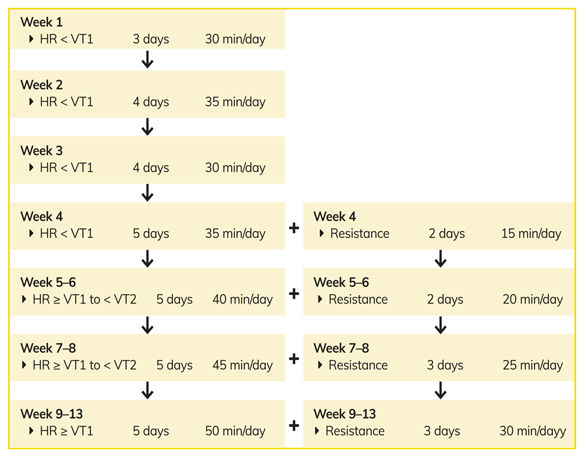
Figure 1. Week-to-week exercise program for days/times of cardiorespiratory and resistance training
After the Exercise Program
Upon completion of the 13-week program and post-program testing (repeating the baseline measures), participants were randomly placed into two groups. The “train” group continued the individualized exercise program for an additional four weeks. The “detrain” group discontinued regular exercise and did not perform any structured exercise for four weeks, though they were permitted to maintain other lifestyle habits.
To quantify the time-magnitude changes in anthropometric measures, physical fitness and cardiometabolic health that occurred with the cessation of regular physical activity, the researchers obtained the following measures at the following time intervals:
- Weeks 1, 2, 3, and 4 post-program: Blood pressure, blood lipids, blood glucose, waist circumference and weight
- Weeks 2 and 4 post-program: Cardiorespiratory fitness, muscular fitness, body composition and flexibility
The Results
At the end of the 13-week program, the 29 participants who completed the study (six dropped out for various reasons, none of which were injury-related) saw significant improvements in VO2max, body-fat percentage, bench press 5-RM, leg press 5-RM, sit-and-reach scores, systolic blood pressure, HDL cholesterol and triglycerides (Table 1). Importantly, there were no significant differences between the two groups on any anthropometric, physical-fitness or cardiometabolic measurement.
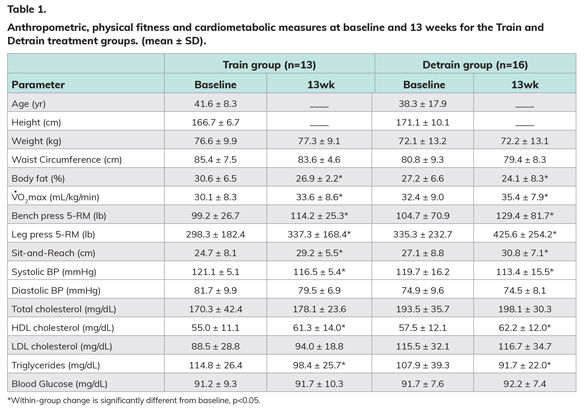
After this round of assessments, the “train” group went on to complete four additional weeks of training. All measures of physical fitness (VO2max, body-fat percentage, bench press 5-RM, leg press 5-RM and sit-and-reach) continued to improve during this month, as did the favorable adaptations in systolic blood pressure, HDL cholesterol and triglycerides.
The “detrain” group stopped all exercise training immediately after the initial 13-week program ended. Among these individuals, all measures of physical fitness, along with systolic blood pressure, HDL cholesterol and triglycerides, significantly worsened (Table 2).
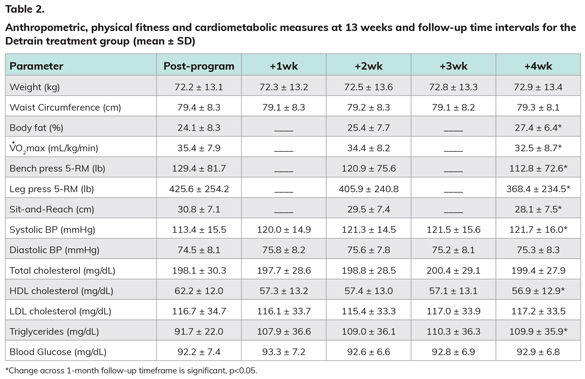
The Bottom Line
The major findings from this study were threefold:
- An individualized exercise program elicited significant improvements in all areas of physical fitness and key cardiometabolic risk factors over 13 weeks of exercise training.
- These favorable adaptations were further enhanced with an additional month of exercise training.
- Cessation of regular exercise rapidly abolished all training adaptions within one month.
It’s important to highlight the different timeframes over which the gains that the participants worked so hard to achieve during the training program were lost. For example, improvements in systolic blood pressure, HDL cholesterol and triglycerides were lost within one week of the cessation of training. What this demonstrates, according to Dr. Dalleck, is that, “In order to decrease cardiometabolic risk, a person must take part in an almost daily practice of physical activity and exercise.”
These findings may be somewhat disheartening to some clients, but they represent an opportunity for health coaches and exercise professionals to educate their clients about the importance of true lifestyle change and sustained exercise training.
The knowledge gained from this research may be helpful for assisting ACE and its certified professionals with not only getting people moving but also keeping them moving long-term. Perhaps the most important question stemming from this research is, what can you do to help clients maintain their fitness levels when they take a break from their workouts?
“It’s important to remind clients that something is better than nothing when it comes to physical activity,” says Dr. Dalleck. Health coaches and exercise professionals should provide their clients with strategies to remain physically active during the inevitable breaks that life will impose, whether we like it or not. “Interrupting sedentary behavior is key,” urges Dr. Dalleck. Even if a client is taking a break from a structured exercise program, he or she should perform as much physical activity as possible in an effort to maintain the benefits of all that hard work.





